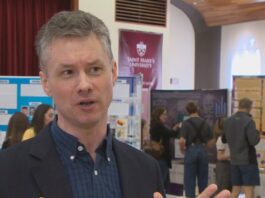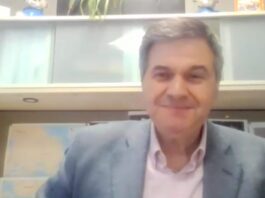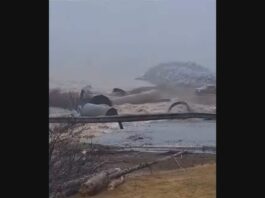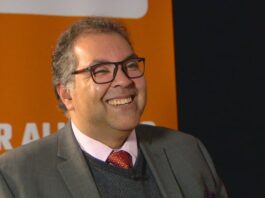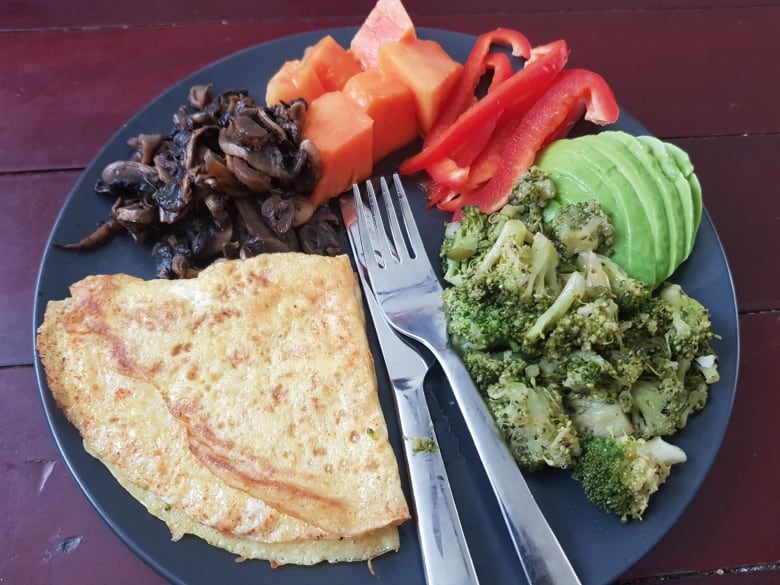
Hello, Earthlings! This is our weekly newsletter on all things environmental, where we highlight trends and solutions that are moving us to a more sustainable world. (Sign up here to get it in your inbox every Thursday.)
This week:
- Flexitarianism, buying used and more: Green habits that are on the rise
- Plastic pollution overwhelms Serbia dam
- How to talk to kids about climate change
Flexitarianism, buying used and more: Green habits that are on the rise

It’s a new year and a time when a lot of us are making resolutions and adopting new habits in an attempt at self-improvement.
Changing our ways is never easy, but statistics show some environmental trends are on the rise, especially among younger Canadians. Here’s a look at a few.
Flexitarian eating
This is a month when a lot of people try out new diets, such as “Veganuary” or avoiding animal products, but these are actually part of a longer-term trend.
Citing United Nations data, Bloomberg News reported that per capita meat consumption was expected to fall three per cent globally in 2020 — the biggest decline since 2000 — as a result of pandemic-related factors such as restaurant closures and COVID-19 outbreaks at meat-packing plants.
But even before COVID-19, Canadians were eating less meat, University of Guelph researchers reported, and suggested it was as a result of health and environmental reasons. (We’ve previously discussed the large emissions of greenhouse gases from meat production.)
“It is relatively clear that ‘meat minimizers’ or flexitarians — those who still eat meat, but are eating less of it — are driving changes in meat consumption,” the Guelph researchers wrote in a 2019 article in The Conversation.
Similar trends are underway in other countries. In a 2020 survey by the market research publisher Packaged Facts, 36 per cent of American respondents identified as flexitarian, compared to just three and five per cent, respectively, who were vegan or vegetarian.
Flexitarianism was most common among those under 35, which is similar to findings in a 2019 study by the U.S.-based food industry association FMI.
Buying used
Manufacturing a new product typically uses up resources and generates emissions and waste, so reducing, reusing and recycling are key to sustainability. For those reasons, more and more environmentally conscious consumers are buying goods second-hand.
ThredUP, an online marketplace for used clothing that expanded to Canada last year, reported that the U.S. market for previously worn fashions has doubled to $24 billion US since the company was founded in 2009.
More and more retailers are also launching programs to make it easier to resell their products, including Patagonia, Levi Strauss and Co. and Ikea.
Again, this is part of a broader trend. A 2019 study by researchers at the University of Quebec at Montreal that was commissioned by Kijiji found the second-hand economy in Canada grew annually from 2015 to 2018, hitting a record $27.3 billion in value.
People 45 and under were the most active participants and the number of individuals reporting an ecological motive for acquiring, selling or donating second-hand goods is increasing.
Active transportation
Amid the coronavirus pandemic and the transmission risks on public transit, many cities in Canada and around the world have expanded cycling lanes and other infrastructure.
As of August, Statistics Canada reported that more Canadians were walking or biking to work (six per cent) than taking public transit (three per cent, down from 13 per cent), and a fifth of those who switched away from public transit during the pandemic were walking or cycling. (Meanwhile, 22 per cent of workers were telecommuting, up from four per cent.)
The trend toward active commuting isn’t just a pandemic blip. A 2019 study by the University of Toronto found an increase in people who cycled to work in 42 of Canada’s 100 census divisions between 1996 and 2016 — especially in Montreal, where it nearly tripled to 3.6 per cent of commuters, and in Toronto, where it increased 146 per cent to 2.7 per cent of commuters.
— Emily Chung
Reader feedback
In terms of adopting sustainable new habits, reader Carl Duivenvoorden had this to contribute.
“Our family just installed a solar array to (mostly) power our home and fuel our [electric vehicle],” he wrote. “I posted about it on my Facebook page … and it got a good bit of positive reaction.
“The main point: When I first heard of someone doing this a few years ago, I thought it was really cool and wanted it, too — but it seemed so far off and complicated, and I had so many barriers and questions. But now here I am, with the same type of system. So I think the big takeaway is if I can do it, I suppose it’s within reach for others, too.”
Old issues of What on Earth? are right here.
There’s also a radio show! This week, What on Earth digs into how to talk to kids about climate change. You might be tempted to avoid it, but that’s not the solution. Host Laura Lynch gets a playbook for what helps — including doing something about it. Listen to What on Earth on CBC Radio One on Sunday at 12:30 p.m., 1 p.m. in Newfoundland, or any time on podcast or CBC Listen.
The Big Picture: Plastic pollution overwhelms Serbian dam
The plastic pollution problem is well-established by now, but every once in a while you come across an image that brings it into sharper relief. Such is the case with the photo below from Serbia, where plastic has gathered on the lip of a hydroelectric dam on Potpecko Lake. A local activist, Sinisa Lakovic, warns that the floating trash could clog up the power plant. (For a closer look, check out some stunning drone footage here.) Lakovic estimates the plastic waste covers about 20,000 cubic metres, and that most of it originates in landfills upstream along the Lim River. “This is not a recent problem, but rather a problem of several decades, caused by the unsanitary landfills,” Sinisa told Reuters. Serbian authorities have ordered a cleanup and invited neighbouring Montenegro, where some of the landfills are located, to help out.

Hot and bothered: Provocative ideas from around the web
-
For a variety of fairly obvious reasons, people are eager to forget last year. But this story argues 2020 held some silver linings on the environmental front, from the climate concern that helped elect Joe Biden as president in the U.S. to worldwide net-zero emissions pledges to the continuing growth of renewable energy.
-
Amid heightened interest during the pandemic in walking and cycling, our southerly neighbour is building a 6,000-kilometre trail that will stretch from coast to coast. Once complete, the Great American Rail Trail will start in Washington, D.C. (which is on the Potomac River, which flows into Chesapeake Bay and then the Atlantic Ocean), cross 12 states and end on the coast of Washington state.
How to talk to kids about climate change

Eamon Knell was just six years old when he began lying awake at night worrying about climate change.
The Toronto youngster had seen a climate video for kids that said humans had 11 years to make significant changes. To him, that meant the world would end in slightly more than a decade.
“He wanted to talk about it every night before he went to bed, and he would go from being grief-stricken and upset about it to lying in bed thinking about solutions,” said Eamon’s mom, Megan Flynn, in an interview with CBC Radio’s What on Earth.
When kids are afraid of monsters, parents can shine a light under the bed to show them there’s nothing there. But with climate change, the risk is very real — and so is the anxiety.
So how can parents talk about climate change with their kids while limiting the fear? According to Dr. Christine Korol, a psychologist and director of the Vancouver Anxiety Centre, parents first need to find out exactly what their child fears.
For example, a kid might mistakenly think the world is going to end tomorrow.
“Focus on making sure you understand exactly what your child is worried about,” said Korol. “Because a lot of times, they’re worried about things that they don’t need to be.”
She emphasized that parents shouldn’t broach the threat of climate change with young kids but rather address concerns as they appear, and focus on fostering a love of nature.
Parents with older kids, meanwhile, should expect deeper conversations, “and probably deal with anger at how dumb adults are to have destroyed the planet, and to have let it happen,” Korol said.
Climate change can seem both insurmountable and overwhelming, especially for children. The key, said Korol, is to ask: “What are the things we can do?”
Those plans are very individual, she said, but they usually involve developing concrete actions the child and the family can take — everything from lifestyle changes to climate marches to letter writing.
“And I usually try not to plant too much in them. I get them to outline it,” said Korol.
Parents should also work with the child to develop a personal coping plan. For example, Korol had one patient who was afraid of ghosts, so she asked him what he would do if a ghost showed up in his room. He answered that he would scream.
“And I said, ‘Well, that’s a great idea. Someone’s going to come running and help you out,'” said Korol. She then helped the boy create a list of all the different things he could do if a ghost appeared in his room, and he felt relieved.
Similarly, she said if a young person is afraid of forest fires, a parent might help them create a safety plan (like calling the fire department and evacuating) as well as figure out ways they can enjoy the outdoors when there isn’t a fire or encourage them to write to politicians or join an environmental organization.
“It’s a very simple thing to do, and it’s easier to brainstorm with somebody else when you’re nervous,” Korol said. “But it increases your belief in your ability to cope with things.”
— Jennifer Van Evra
Stay in touch!
Are there issues you’d like us to cover? Questions you want answered? Do you just want to share a kind word? We’d love to hear from you. Email us at whatonearth@cbc.ca.
Sign up here to get What on Earth? in your inbox every Thursday.
Editor: Andre Mayer | Logo design: Sködt McNalty









